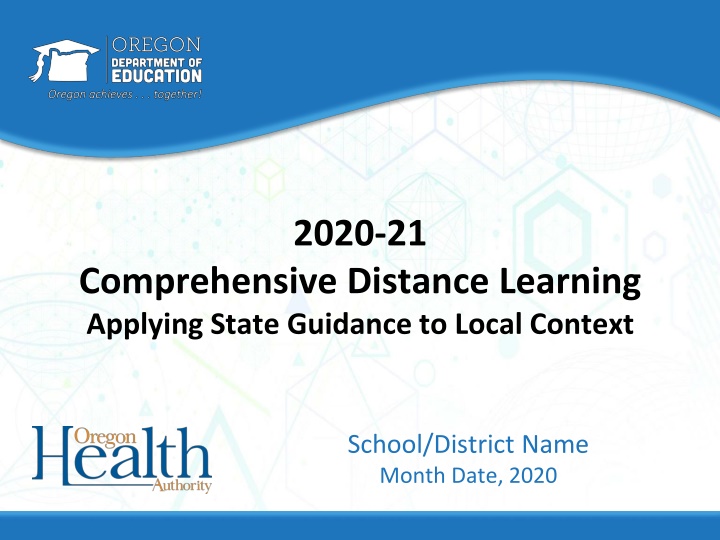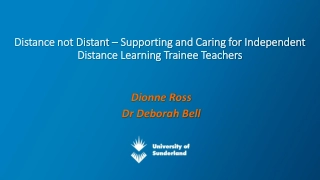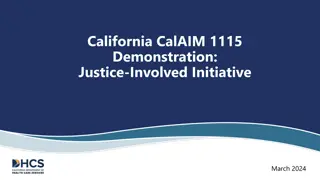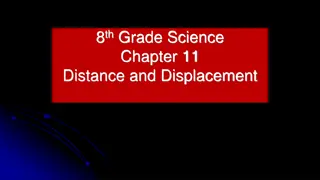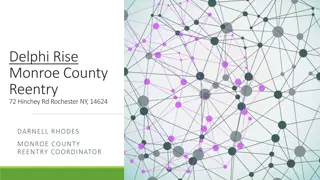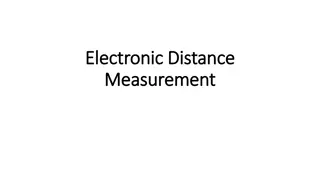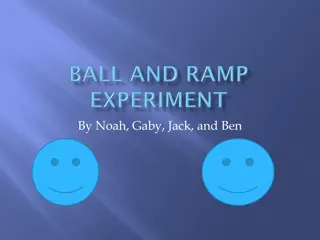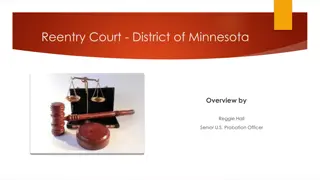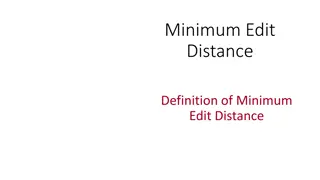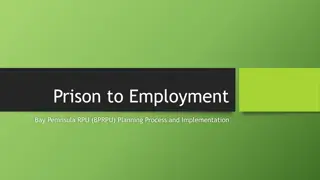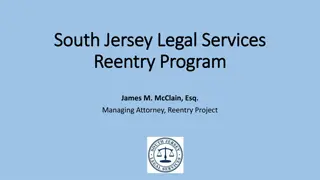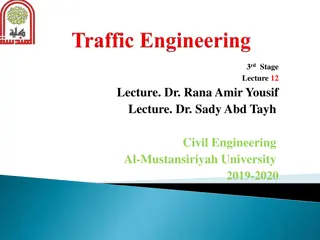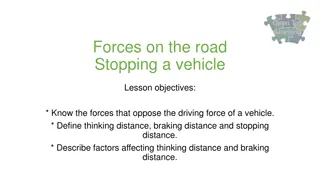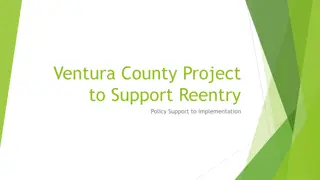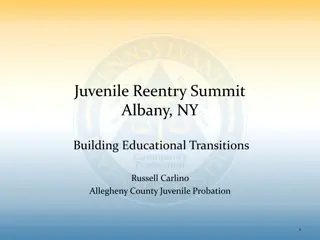Comprehensive Distance Learning for School Reentry
The roadmap for school reentry in the Spring of 2020 through collaboration with families, districts, and health officials. Detailed steps and considerations for developing a successful reentry plan, including health requirements and instructional options. Strategies for effective communication and community commitment emphasized throughout the process."
Download Presentation

Please find below an Image/Link to download the presentation.
The content on the website is provided AS IS for your information and personal use only. It may not be sold, licensed, or shared on other websites without obtaining consent from the author.If you encounter any issues during the download, it is possible that the publisher has removed the file from their server.
You are allowed to download the files provided on this website for personal or commercial use, subject to the condition that they are used lawfully. All files are the property of their respective owners.
The content on the website is provided AS IS for your information and personal use only. It may not be sold, licensed, or shared on other websites without obtaining consent from the author.
E N D
Presentation Transcript
2020-21 Comprehensive Distance Learning Applying State Guidance to Local Context School/District Name Month Date, 2020
Todays Topics The Road to Here: Spring 2020 Developing a Reentry Plan Our Blueprint for Reentry Comprehensive Distance Learning Communication, Collaboration, and Commitment Questions
The Road to Here Spring 2020 Remarkable collaboration between families, district, state, health officials to protect student health and soften disruption to learning Distance Learning for All flexible to handle changing conditions from day-to- day and week-to-week Instruction, attendance, parent-teacher engagement not strictly defined
Planning for Reentry 10 Steps to Completion Used Oregon Ready Schools, Safe Learners as guide Consulted with local public health authority Gathered planning team with school, district, and community partners Planning team drafted Operational Blueprint for Reentry template Consulted with key stakeholders (eg. staff, students, families, tribes, community organizations, and early learning and childcare providers) to draft School board reviewed blueprint Local public health authority reviewed blueprint Local public health authority gave support of our ongoing COVID- 19 prevention efforts Blueprint shared on school and district websites 10. Submitted final plan for each school to the Oregon Department of Education 1. 2. 3. 4. 5. 6. 7. 8. 9.
Planning for Reentry Local Considerations PLACEHOLDER for 3-5 local considerations that played into planning process
Planning for Reentry Health Considerations & Requirements
Planning for Reentry Options for Instruction On-Site Instruction Schools open as usual after meeting strict health and safety requirements Hybrid In a hybrid instructional model, some instruction is in-person and some instruction is provided off-site Comprehensive Distance Learning (CDL) All districts in Oregon must develop a CDL plan and offer it to families
Our Blueprint for Reentry Overview Partnership with Families We know that clear and ongoing communication is essential to student success. Our blueprint includes opportunities for families to stay in-the-know, receive orientation and training on instructional platforms, and offer continued input to the district. [PLACEHOLDER to direct to where to find more information and stay engaged.]
Our Blueprint for Reentry Overview Meeting Health and Safety Requirements In response to late-summer surge of COVID-19 cases, Governor Brown announced specific requirements to re-open schools on July 28, 2020. Our blueprint addresses these requirements and includes a local action plan should an outbreak occur when school is held on-site [Direct to where to find more information.]
Our Blueprint for Reentry Overview Developing an Instructional Model Given the changing public health conditions, family input, and state guidelines, XX School District will open with a hybrid model/CDL-only model only For Hybrid and On-Site only, we have developed a CDL plan as required so we re prepared should we need to quickly switch.
Comprehensive Distance Learning Instruction Our CDL includes teaching in different ways Synchronous Students learning together Asynchronous Students learning at their own pace
Comprehensive Distance Learning Instruction In Spring 2020 instructional time requirements were paused in response to the pandemic. Fall 2020 Comprehensive Distance Learning reinstates instructional time requirements to ensure a restored full year of learning time.
Comprehensive Distance Learning Other changes included in CDL Plan Instruction Increased daily learning time Focus on teacher-facilitated learning time English language support and SPED support provided through real-time opportunities Relationship & Connection Daily real-time check-ins between staff/student Daily peer interaction Daily attendance taken Family Engagement & Communication Family/parent virtual connections at least 4x per year Family & student feedback at least 3x per year Digital Learning Needs Plan to address infrastructure, devices, software system, digital content, professional development needs
Comprehensive Distance Learning How CDL differs from Spring 2020 Distance Learning For All CDL Waived instructional time requirements Maintained instructional time requirements Recommended times for teacher- led learning K-3: 45-60 minutes maximum 4-5: 90 minutes maximum MS/HS: 3 hours maximum Required minimums for teacher- facilitated learning daily K-3: 140 minutes 4-8: 150 minutes 9-11: 2 hours 50 minutes No real-time teaching contact required At least one daily real-time teaching opportunity required Pass/Incomplete in lieu of letter grades Equitable grading policy determined by district (letter grades allowed) Daily attendance encouraged Required daily attendance
Comprehensive Distance Learning The Learning Day and Week Grade Teacher-Facilitated Learning Applied Learning Nutrition and Wellness (recommended) At least 50% of Instructional Time Not more than 50% of Instructional Time Doesn t count as Instructional Time K-3 2 hrs 20 min/day 11 hrs 40 min/week 2 hrs 30 min/day 12 hrs 30 min/week 9-11 2 hrs 50 min/day 14 hrs 10 min/wk 12 2 hrs 45 min/day 13 hrs 45 min/day No Minimum 2 hrs/day 4-8 No Minimum 2 hrs/day No Minimum 2 hrs/day No Minimum 2 hrs/day
Our Commitment Collaboration and Communication Families and the larger community are essential partners. Staff, students, families, tribes, community organizations, and the early learning and childcare providers who have supported student learning We ve proven we are stronger when we work together. We are prepared to adapt and change plans if the need arises. We know that consistent communication is essential to student health and success.
Strong Start for Fall 2020 We all have a part to play! Linking arms for learning and well being for all students 2020-2021
Questions? Contact Information
